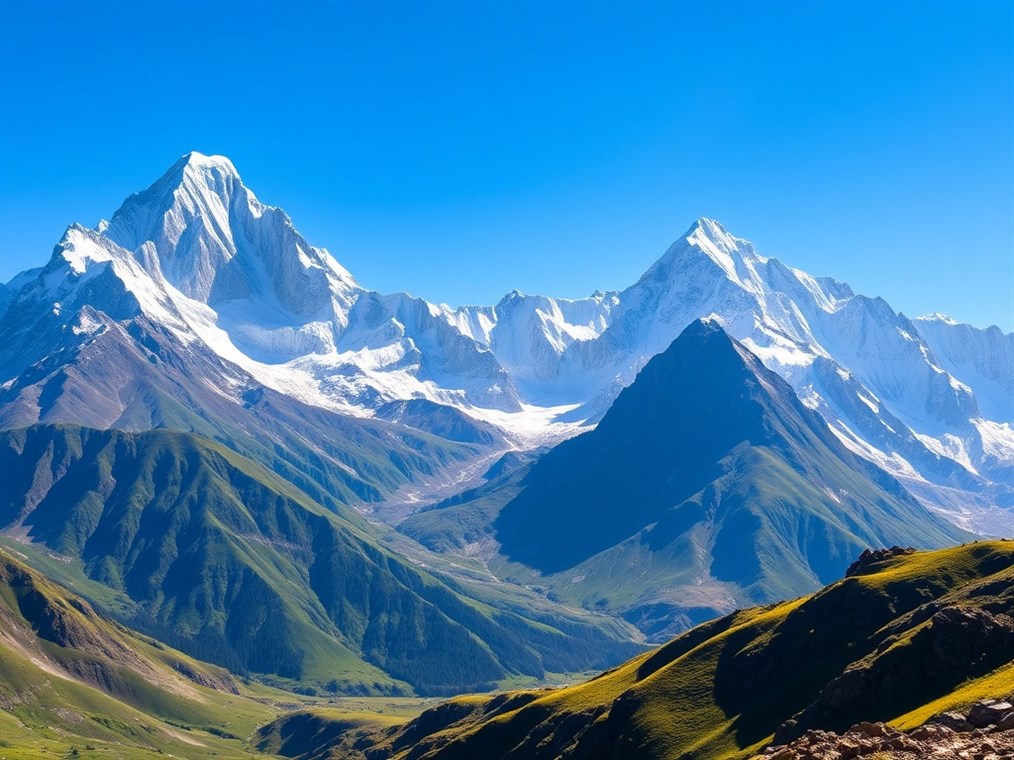
The Himalayas: Earth’s Newest Mountains, Still Growing!
FactsThe Himalayas: Earth’s Newest Mountains, Still Growing!
Mountains, right? We’re surrounded by them, each with a story etched in stone. But if you’re talking about the youngest mountains on the planet? That title belongs, hands down, to the Himalayas. Imagine a giant, 2,400-kilometer arc stretching across Asia – not only are they the tallest peaks around, but they’re practically newborns in geological terms. It’s all thanks to the Earth’s tectonic plates doing their thing!
So, how did these sky-scraping giants even come to be? Well, rewind about 225 million years. Back then, India was basically a huge island chilling off the coast of Australia, with the Tethys Sea separating it from Asia. Fast forward a bit, Pangaea breaks up, and India starts heading north like it’s got a serious appointment to keep. Around 50 million years ago – BAM! – India slams into the Eurasian plate.
Now, here’s the thing: neither of these continental plates was going to sink under the other. Too buoyant, too stubborn. Instead, the pressure went through the roof, and the land started buckling and folding like crazy. Think of it like a tablecloth being pushed from opposite ends. That’s orogeny, my friends, and that’s how the Himalayas (and the Tibetan Plateau) were born. All those ancient seabed sediments from the Tethys Sea? They got pushed skyward, twisted, and turned into the majestic peaks we see today.
And the crazy part? It’s still happening. That Indian plate is still inching its way north at about 67 mm every year, constantly bumping against Eurasia. That means the Himalayas are still growing – about 5 mm a year! Okay, erosion and weathering are constantly trying to wear them down, but these mountains are still geologically kicking, prone to earthquakes, and constantly reshaping themselves. It’s a living, breathing landscape.
What makes the Himalayas so special? Let’s tick off a few things:
- Seriously Tall: We’re talking over 100 peaks that top 7,200 meters (that’s over 23,600 feet!). And, of course, there’s Mount Everest, the big kahuna, standing at a whopping 8,848.86 meters (or 29,031.7 feet) above sea level.
- Sprawling: They cut across six countries – Nepal, India, Bhutan, China, Pakistan, and Afghanistan. Talk about international!
- Shaky Ground: Yeah, it’s earthquake country. All that plate action means things can get a little dicey from time to time.
- Water Towers: The Himalayas feed some of the biggest rivers on the planet – the Indus, Ganges, and Brahmaputra. These rivers are lifelines for millions of people.
But the Himalayas are more than just rocks and rivers. They’re woven into the culture and spirituality of the region. They’re sacred to Hindus and Buddhists, dotted with monasteries, and draw pilgrims from all over the world. Plus, they play a massive role in the climate, blocking those freezing winds from the north and shaping weather patterns across Asia.
So, there you have it. The Himalayas: a reminder that our planet is a dynamic, ever-changing place. They’re young, they’re growing, and they’re absolutely awe-inspiring. As India keeps nudging its way into Eurasia, these mountains will keep evolving, standing tall as a testament to the Earth’s incredible power for millions of years to come. Pretty cool, huh?
You may also like
Disclaimer
Categories
- Climate & Climate Zones
- Data & Analysis
- Earth Science
- Energy & Resources
- Facts
- General Knowledge & Education
- Geology & Landform
- Hiking & Activities
- Historical Aspects
- Human Impact
- Modeling & Prediction
- Natural Environments
- Outdoor Gear
- Polar & Ice Regions
- Regional Specifics
- Review
- Safety & Hazards
- Software & Programming
- Space & Navigation
- Storage
- Water Bodies
- Weather & Forecasts
- Wildlife & Biology
New Posts
- Diving Deep into Tangerine: More Than Just a Sunny Locale
- Jamaica Backpack Daypack Pockets Shopping – Review
- TEOYETTSF Climbing Backpack Multifunction Military – Buying Guide
- The Curious Case of Cavendish’s Classroom: Where Did This Science Star Study?
- Dragon Backpack Insulated Shoulder Daypack – Buying Guide
- ROCKY Hi-Wire Western Boots: A Rugged Review After a Month on the Ranch
- Vertical Curbs: More Than Just Concrete Barriers
- Regatta Modern Mens Amble Boots – Honest Review
- YMGSCC Microfiber Leather Sandals: Beach to Boardwalk, Did They Hold Up?
- Tangier: More Than Just a Backdrop in “Tangerine”
- DJUETRUI Water Shoes: Dive In or Doggy Paddle? A Hands-On Review
- Barefoot Yellow Pattern Hiking 12women – Is It Worth Buying?
- Koa Trees: How Fast Do These Hawaiian Giants Really Grow?
- DDTKLSNV Bucket Hat: Is This Packable Sun Shield Worth the Hype?